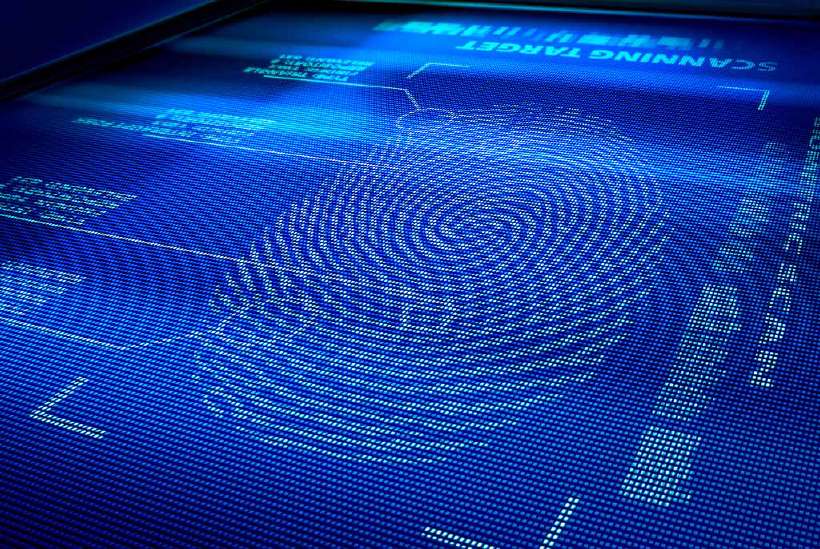Can Two People have Identical Fingerprints?
Home / Science for Kids / 5Ws & H For Kids / Can Two People have Identical Fingerprints?
I was once watching a detective serial on T.V. where the fingerprints of the suspect are required. The hero invites the villain to his home and offers him a glass of water. The bad guy takes the glass and drinks the water from it. After he leaves the hero dramatically whips out a handkerchief and picks up the glass. His expressions showed that satisfaction at a job well done.
At that time, I found it amazing – how can smudges on a glass identify people? How can my hand be different from yours – apart from the size that is? It was only after my dad explained me the reason that the mystery behind that highly dramatic scene became clear.

My dad explained that if you were to press your thumb on an inkpad and then on a sheet of white paper you will leave a smudge or print, which no one else in the world can make. The same would be true for each of your fingers. The Chinese were the first to use fingerprints to affix their signature on important documents though they had no way of identifying or matching it with the owner.
If you look closely at the inside of your palm you can see tiny lines all over. These are absolutely unique and they remain practically unchanged from birth to death.
Each print is one-of-a-kind and no two people have the same characteristic. Scientists and criminologists (those who study criminal characteristics) determine the individuality of a fingerprint by a careful study of its ridge characteristics (minutiae) and not by its general shape or pattern.
The surface of the skin has been designed to provide our bodies with a firm grasp and to prevent objects grasped from slipping. Skin is composed of layers of cells. The outer portion of skin is called the epidermis while the inner skin is the dermis. Separating the two layers is a boundary of cells called the papillae.
Each skin ridge has a single row of pores that open out for the sweat glands. Once the finger touches a surface, sweat from these pores, along with other body oils layer the ridge of the skin and are thus transferred to that surface. The result is an impression of the finger’s ridge pattern. Such prints are referred to as hidden fingerprints because they are invisible to the naked eye.
How this fact was discovered and now used by the police force worldwide is very interesting to trace. In 1823, John Evangelist Purkinji, a professor of anatomy at the University of Breslau in Czechoslovakia, published the first document on the nature of fingerprints.
In 1856, Sir William Herschel, who was then working for the Indian Civil Service in West Bengal, used thumbprints on documents as a substitute for signatures. In 1880, a British physician Henry Faulds, who was then working in Tokyo, published a paper suggesting that fingerprints left at the scene of a crime could identify the offender. However, Faulds never got the credit he deserved!
In 1892, an English scientist, Sir Francis Galton, published a comprehensive book on using fingerprints to solve crimes. At the same time in Argentina, a police researcher Juan Vucetich was also working towards a fingerprint classification system.
However, it was in 1896 that Sir Edward Richard Henry, then serving as Inspector General of Police in Jalpaiguri district in West Bengal, India, developed a print classification system that will come to be used globally.
Sir Henry and his assistant Khan Bahadur Azizul Haque, discovered that all fingerprints could be systematically classified according to their general ridge patterns. He divided them into three classes on the basis of their general pattern: loops, whorls, and arches.
By counting the ridges between any two points in the pattern, each of the ten fingers could be classified into a particular group. Taking the group together as a unit you have a complete system of classifying fingerprints.
In June 1897, the world’s first fingerprint bureau was set up in Calcutta and in 1901, Sir Edward Richard Henry was appointed head of Scotland Yard in London, where he implemented the system there. This system, called dactyloscopy or the science of fingerprint identification, is still used by police departments all over the world today with few changes.
It works so well that fingerprints can be filed away by these groups, instead of by the name or description of the criminal. Even though millions of prints may be on the file in an office, the right one can be picked out in just a few minutes.
Today, technology has improved so much that from even half a print, scientists can identify and match it with the prints in their files and today, fingerprints can be ‘lifted’ from most any surface, not just glass!
806 words |
8 minutes
Readability:
Grade 9 (14-15 year old children)
Based on Flesch–Kincaid readability scores
Filed under: 5ws and h
Tags: #fingers, #glass, #sweat, #patterns, #fingerprints
You may also be interested in these:
The Hottest way to Catch Crooks
Sand Flower Vase
High-tech Turtle
Madhubani Magic of Gangadevi
Tin Can Lantern